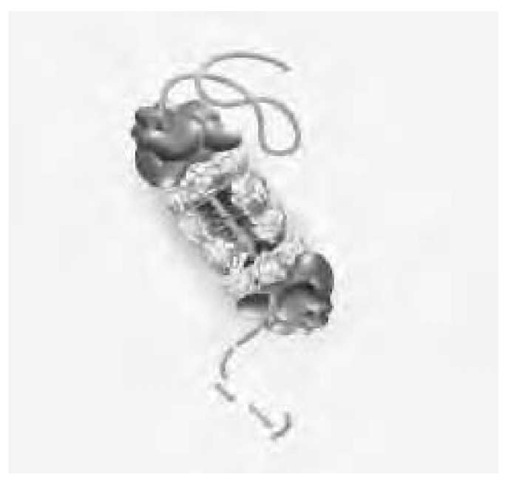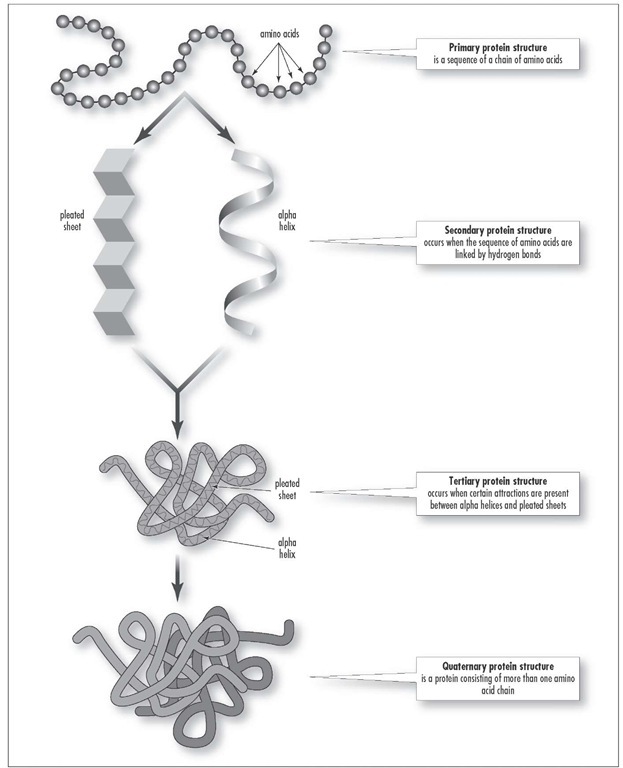Potential energy Stored energy that can be released or harnessed to do work.
Power saturation A phenomenon used in electron paramagnetic resonance spectroscopy to estimate the electron-spin relaxation times, thus providing information about distances between paramagnetic centers.
Predator An animal that preys on or eats other animals.
Predisposition, genetic A latent susceptibility to disease, at the genetic level, that can be activated under certain conditions.
Prevalence The number of all new and old cases of a disease in a defined population at a particular point in time.
Prezygotic barrier There are two types of reproductive isolation mechanisms: prezygotic (before gamete union) and postzygotic (after gamete union). A form of prezygotic barrier is mechanical isolation, which deals with the mechanics of the reproductive organs and physically prevents sexual intercourse between two different species. Temporal (two species reproduce at different times of day) and habitat isolation (two overlapping species in same range live in different habitats) are also prezygotic barriers. See also postzygotic barrier.
Primary consumer Any animal that eats grass, algae, and other green plants in a food chain; a herbivore.
Primary germ layers After gastrulation, development of the three germ layers—ectoderm, mesoderm, endoderm—occurs, and these eventually develop into all parts of the animal.
Primary growth Growth initiated by the apical meristem that takes place relatively close to the tips of roots and stem and that involves extending the length of the plant.
Primary immune response The immune response (cellular or humoral) to a first encounter with an antigen. The primary response is generally small, has a long induction phase or lag period, consists primarily of IgM antibodies, and generates immunologic memory.
Primary producer An autotroph that acts as a food source for the next level up in the food chain. Green plants are primary producers.
Primary productivity The rate at which new plant biomass is formed by photosynthesis. Gross primary productivity is the total rate of photosynthetic production of biomass; net primary productivity is gross primary productivity minus the respiration rate.
Primary structure The amino acid sequence of a protein or the nucleotide sequence of DNA or RNA.
Primary succession occurs when communities develop in a newly exposed habitat that had no former life (e.g., bare rock, newly deposited sand).
Primate Mammals that include humans and other species that are closely related. There are two main groups: the anthropoids (humans, apes, monkeys) and prosimians (aye-ayes, galagos, lemurs, lorises, pottos, and tarsiers).
Primer A short preexisting polynucleotide chain to which new deoxyribonucleotides can be added by DNA polymerase.
Primordial germ cells Fetal cells that develop in the early fetus and that will develop into the gametes, the male sperm or female eggs.
Principle of allocation Each organism has a limited, finite energy budget that is used for living out its life processes of growth, reproduction, obtaining nutrients, predator flight, and adjusting to environmental changes.
Prion The smallest infectious particle known (though its existence is challenged by some scientists), consisting of hydrophobic protein without any nucleic acid. There are a number of prion-caused diseases. Scrapie, found in sheep and goats, causes those animals to lose coordination, and eventually they become incapacitated and develop an intense itch that leads them to scrape off their wool or hair (hence the name "scrapie"). Other diseases are transmissible mink encephalopathy, chronic wasting disease of mule deer and elk, feline spongiform encephalopathy, and bovine spongiform encephalopa-thy (mad cow disease). Kuru has been seen among the Fore highlanders tribesmen of Papua New Guinea, the result of cannibalism (but has almost disappeared). Creutzfeldt-Jakob disease affects one person in a million. The other two human prion diseases are Gerstmann-Straussler-Scheinker disease and fatal familial insomnia.
Probability The statistical measure of an event’s likelihood.
Procambium A primary meristem tissue that differentiates into the vascular bundle and vascular tissues (xylem and phloem).
Prodrug Any compound that undergoes biotransformation before exhibiting its pharmacological effects. Prodrugs can thus be viewed as drugs containing specialized nontoxic protective groups used in a transient manner to alter or to eliminate undesirable properties in the parent molecule.
Prognosis Prediction of the future course of a disease.
Prokaryote A unicellular organism characterized by the absence of a membrane-bound nucleus. See also eukaryotes.
Promoter The DNA region, usually upstream from the coding sequence of a gene or operon, that binds and directs RNA polymerase to the correct transcriptional start site and thus permits transcription at a specific initiation site. (In catalysis, a promoter is used differently: a cocatalyst usually present in much smaller amounts than the catalyst.)
Prophage A phage (bacteriophage, a virus that infects bacteria) chromosome that has been inserted on a specific part of the DNA chromosome of a bacterium.
Comparison of Prokaryotic and Eukaryotic Cells
|
Prokaryotic |
Eukaryotic |
|
|
Occurrence |
bacteria |
animals, plants, and fungi |
|
Average diameter |
1pm |
20pm |
|
Nuclear material |
not separated from cytoplasm by membrane |
bounded by nuclear membrane |
|
DNA |
circular and forming only one linkage group |
linear and divided into a number of chromosomes |
|
Nucleolus |
- |
+ |
|
Cell division |
amitotic |
usually by mitosis or |
|
meiosis |
||
|
Cytoplasmic |
- |
+ |
|
streaming |
||
|
Vacuoles |
- |
+ |
|
Plastids |
- |
+ |
|
Ribosomes |
smaller (70S) |
larger (80S) |
|
Endoplasmic |
- |
+ |
|
reticulum |
||
|
Golgi apparatus |
- |
+ |
|
+ indicates presence; – indicates absence |
||
Prophase During prophase, the chromosomes are identical chromatids that are connected at the center by a centromere (x-shaped). The mitotic spindle, which is used to maneuver the chromosomes about the cell, is formed from excess parts of cytoskeleton and initially set up outside the nucleus.
The cell’s centrioles are then duplicated to form two pairs of centrioles, with each pair becoming a part of the mitotic center forming the focus for the aster, an array of microtubules. The two asters lie side by side and close to the nuclear envelope while near the end of prophase; the asters then pull apart and the spindle is formed.
Prophylaxis Measures taken (treatment, drugs) to prevent the onset of a particular disease (primary prophylaxis) or recurrent symptoms in an existing infection that have been brought under control (secondary prophylaxis, maintenance therapy). Preventive treatment. Treatment intended to preserve health and prevent the occurrence or recurrence of a disease. Taking a drug to prevent yourself from getting an illness. Chemoprophylaxis is prevention of disease by chemical means.
Proprioreceptor Part of the sensory system. A sense organ that detects the relative position about body positions and movement.
Prostaglandin (PG) A lipid mediator, synthesized by the action of the enzyme phospholipase A2, which breaks down cell membrane components into arachi-donic acid and then into prostaglandin by cyclooxyge-nase. Highly proinflammatory, bronchospastic, and vasodilatory.
Prosthetic group A tightly bound, specific non-polypeptide unit in a protein that determines and is involved in its biological activity.
Proteasome A large, protein-complex protease found inside cells that degrades other proteins that have been tagged for elimination by a smaller protein, ubiquitin, in a process called ubiquitination. ubiquitin covalently attaches to lysines of the other proteins, tagging them for proteolysis (cleavage of proteins by proteases) within the proteasome.
Breaking down unneeded proteins is accomplished by the orderly action of several multiprotein complexes. At the heart of this process is a multiprotein complex called the proteasome. These machines of destruction consist of a tunnellike core with a cap at either or both ends. The core is formed by four stacked rings surrounding a central channel that acts as a degradation chamber. The caps recognize and bind to proteins targeted by the cell for destruction, then use chemical energy to unfold the proteins and inject them into the central core, where they are broken into pieces. This is a fundamental kind of machine that has been highly conserved during evolution. Some form of it is found in organisms ranging from simple bacteria to humans.
Protein A molecule composed of many amino acids and with a complex structure. For example, immunoglobulin, casein.
Protein kinase A kinase is an enzyme that transfers a phosphate group from ATP to some molecule. A protein kinase phosphorylates a protein, using ATP, and the phosphorylation modulates the shape and activity of proteins. Protein kinase A and protein kinase C are involved in intracellular signal transduction in most human cells.
Protein is a large complex molecule made up of one or more chains of amino acids. Proteins perform a wide variety of activities in the cell.
Protein machines Genomes are "brought to life" by being read out or "expressed" according to a complex set of directions embedded in the DNA sequence. The products of expression are proteins that do essentially all the work of the cell: they build cellular structures, digest nutrients, execute other metabolic functions, and mediate much of the information flow within a cell and among cellular communities. To accomplish these tasks, proteins typically work together with other proteins or nucleic acids as multicomponent "molecular machines," structures that fit together and function in highly specific, lock-and-key ways.
Protein phosphatase (phosphoprotein phosphatase) An enzyme that removes a phosphate group from a protein by the use of hydrolysis; opposite effect of a protein kinase.
Proteoglycan A type of glycoprotein with high carbohydrate content; component in the extracellular matrix of animal cells. Composed of one or more gly-cosaminoglycans, long polysaccharide chains covalent-ly linked to protein cores.
Protoderm one of the three primary meristem tissues differentiated from the apical meristem; the outermost tissue. The protoderm differentiates into the plant’s epidermis of the roots and shoots.
Proton An atomic particle found in the nuclei of atoms along with a neutron, but the proton has a positive electric charge.
Protonephridium An example of primitive kidneys for osmoregulation and excretion among platyhelminthes.
Protonephridium consists of a network of two or more closed longitudinal branched tubules running the length of the body. The tubular system drains into excretory ducts that empty into the environment through nephrid-iopores, small external openings.
Proton motive force Energy or force created by the transfer of protons (hydrogen ions) on one side only of a cell membrane and across the membrane during chemios-mosis; an electrochemical gradient that has potential energy. This force can be channeled to operate rotating flagella, generate ATP, and other needed activities.
Proton pump Proton pumps are a type of active transport that use the energy of ATP hydrolysis to force the transport of protons out of the cell, thus creating a membrane potential.
Proto-oncogene A normal gene that can become an active oncogene, one that is capable of causing cells to change into cancer cells, by mutation or insertion of viral DNA.
Protoplasm The living material within cells.
Protoplast Any cell from which the outer cell wall or membrane has been removed, leaving only the cell contents.
Protoporphyrin IX The porphyrin ligand of heme b. Heme b is a Fe(II) porphyrin complex readily isolated from the hemoglobin of beef blood, but it is also found in other proteins, including other hemoglobins, myoglobins, cytochrome p-450, catalases, peroxidas-es, as well as b type cytochromes. Protoporphyrin IX contains four methyl groups in positions 2, 7, 12, and 18, two vinyl groups in positions 3 and 8, and two propionic acid groups in positions 13 and 17.
Protostome Any of the group of coelomates, such as annelids, mollusks, and arthropods, whose embryonic blastopore becomes a mouth and who have spiral and determinate cleavage.


